Even China’s two-decade-old policy of subsidizing fishing as an assertion of sovereignty can’t explain the behavior of most Chinese vessels in the Spratlys in recent years.
China's maritime militia is playing an increasingly visible role in asserting Chinese maritime claims. AMTI director lays out the facts on the largest fleet in the South China Sea and how it raises the risk of armed conflict:
China's maritime militia is playing an increasingly visible role in asserting Chinese maritime claims. AMTI director lays out the facts on the largest fleet in the South China Sea and how it raises the risk of armed conflict:
From Foreign Policy by Gregory Poling
The evidence shows that supposed fishing boats around contested islands are part of an extensive maritime militia.
The Spratly Islands, occupied by five different claimants, are the most hotly contested part of the South China Sea.
Thanks to the harbors and supporting infrastructure Beijing constructed on its outposts there over the last five years, most vessels operating around the Spratlys are Chinese.
And most of those are at least part-time members of China’s official maritime militia, an organization whose role Beijing frequently downplays but that is playing an increasingly visible role in its assertion of maritime claims.
A small cohort of analysts continue to cast doubt on the existence and activities of the maritime militia.
The best-intentioned offer alternative explanations for the curious behaviors of the Chinese fishing fleets, though those don’t stand up to scrutiny.
Other writers, especially those affiliated with Chinese institutions and state media, seek to present an alternate version of reality by artfully cropping satellite imagery, cherry-picking data, or simply ignoring the facts and attacking the motives of those presenting evidence of militia activities.
The South China Sea is the most contested piece of geography on the planet.
CSIS's Greg Poling explains how China uses maritime militias to intimidate its neighbors and assert its claim over the South China Sea.
This is unsurprising—the purpose of employing a maritime militia is to keep aggression below the level of military force and complicate the responses of other parties, in this case chiefly the other claimants (Vietnam, the Philippines, Malaysia, and Taiwan) as well as the United States, by hiding behind a civilian facade.
Without deniability, the militia loses much of its value.
That gives China a strong incentive to dissemble and deny evidence of its actions.
But that evidence speaks for itself.
The People’s Armed Forces Maritime Militia is not a secret.
Article 36 of the China Military Service Law of 1984, revised in 1998, calls for the militia “to undertake the duties related to preparations against war, defend the frontiers and maintain public order; and be always ready to join the armed forces to take part in war, resist aggression and defend the motherland.” China’s 2013 defense white paper enhanced the maritime militia’s role in asserting sovereignty and backing up military operations.
This is the naval analogue to China’s larger and better-known land-based militia forces, which operate in all Chinese theater commands, supporting and under the command of the People’s Liberation Army (PLA).
In 2013, Chinese President Xi Jinping visited the maritime militia in Tanmen township on Hainan, China’s southernmost province, and labeled it a model for others to follow.
Andrew Erickson, Conor Kennedy, and Ryan Martinson at the China Maritime Studies Institute at the U.S.
Naval War College have spent years documenting the activities of the maritime militia, including extensive acknowledgment by Chinese authorities and many instances in which militia members have publicly discussed their activities.
A review of available remote sensing data by the Center for Strategic and International Studies and Vulcan Inc.’s Skylight Maritime Initiative, including infrared imaging, synthetic aperture radar, and high-resolution satellite imagery, shows that the largest number of vessels operating in the Spratly Islands belongs to the Chinese fishing fleet, which frequently numbers between 200 and 300 boats at Subi and Mischief Reefs alone.
This is not by itself peculiar: China maintains the world’s largest fishing fleet, and its distant water vessels operate around the globe due to overfishing and pollution of Chinese coastal waters.
But the vessels operating in the Spratlys are not part of that distant water fleet—those boats are larger and head farther afield in the hunt for high-value migratory species.
And at 800 nautical miles (about 920 miles) from the mainland, the Spratlys are too far for small and medium-sized Chinese fishing vessels to operate productively without being heavily subsidized.
But even China’s two-decade-old policy of subsidizing fishing as an assertion of sovereignty can’t explain the behavior of most Chinese vessels in the Spratlys in recent years.
AIS signals detected in the South China Sea in June 2018.
CSIS
CSIS
Chinese fishing boats in the islands average more than 500 tons, well over the size legally required for boats undertaking international voyages to use Automatic Identification System (AIS) transceivers, which broadcast identifying information, headings, and other data about oceangoing vessels.
But fewer than 5 percent of them actually broadcast AIS signals at any given time.
This suggests a fleet intent on hiding its numbers and actions.
These large, modern vessels represent a stunning level of sunk capital costs but do not engage in much commercial activity.
Frequent satellite imagery shows that the vessels spend nearly all of their time anchored, often in large clusters.
This is true whether they are inside the lagoons at Subi and Mischief Reefs or loitering elsewhere in the Spratlys.
Operating in such close quarters is highly unusual and certainly not the way commercial fishing vessels usually operate.
Light falling net vessels, which account for the largest number of Chinese fishing boats in satellite imagery of the Spratlys, very rarely have their fishing gear deployed.
China’s trawlers, meanwhile, almost never actually trawl; instead, satellite imagery and the AIS signals of those few trawlers regularly broadcasting both show that they spend most of their time at anchor.
These unusual, and highly unprofitable, behaviors suggest that most of these supposed fishing boats are not making a living from fish.
Chinese fishing vessels at Subi Reef on August 12, 2018.
© DigitalGlobe, Inc. and © Vulcan Technologies LLC. All Rights Reserved
When Chinese fishing vessels are not at Subi or Mischief Reefs, they are most often seen in satellite imagery anchored near Philippine- and Vietnamese-held outposts in the Spratlys.
This is corroborated by the small number of AIS signals detected from Chinese ships.
The most spectacular example of this behavior was the swarm of vessels from Subi Reef that dropped anchor between 2 and 5 nautical miles from Philippines-held Thitu Island as soon as Manila began modest upgrade work on that feature in December 2018.
The number of vessels seen in satellite imagery peaked at 95 on Dec. 20, 2018, before dropping to 42 by Jan. 26.
That presence continued into early June, when reports suggested that China had begun to pull back the vessels.
The exact number of ships fluctuated from day to day, but almost none broadcast AIS or deployed fishing gear, and they operated in much closer quarters than any commercial fishing vessels would.
Using a combination of technologies -AIS, SAR, VIIRS, and optical
imagery- to track the South China Sea's dark fishing fleets in our new
report as part of the CSIS Stephenson Ocean Security project.
The Armed Forces of the Philippines confirmed that it had monitored 275 individual Chinese vessels swarming near Thitu between January and March, and Manila filed protests with Beijing over their presence.
Meanwhile satellite imagery from March to April showed another cluster of Chinese vessels displaying the same puzzling behavior around two other Philippine-held features: Loaita Cay and Loaita Island.
In that case, some dropped anchor just half a nautical mile from the isolated Philippine facility on Loaita Cay.
Links :
- Bloomberg : China Is Winning the Silent War to Dominate the South China Sea
- CSIS : Illuminating the South China Sea’s Dark Fishing Fleets
- SCMP : Beijing boosts its claims in South China Sea with delivery of new ocean-going research vessel
- GeoGarage blog : China's fishermen explain why they think the sea is theirs / China is planning a massive sea lab ... / China's appetite pushes fisheries to the brink / The fishing wars are coming / Just where exactly did China get the South China Sea nine ... / Conflict and diplomacy on the high seas / Satellites and seafood: China keeps fishing ...
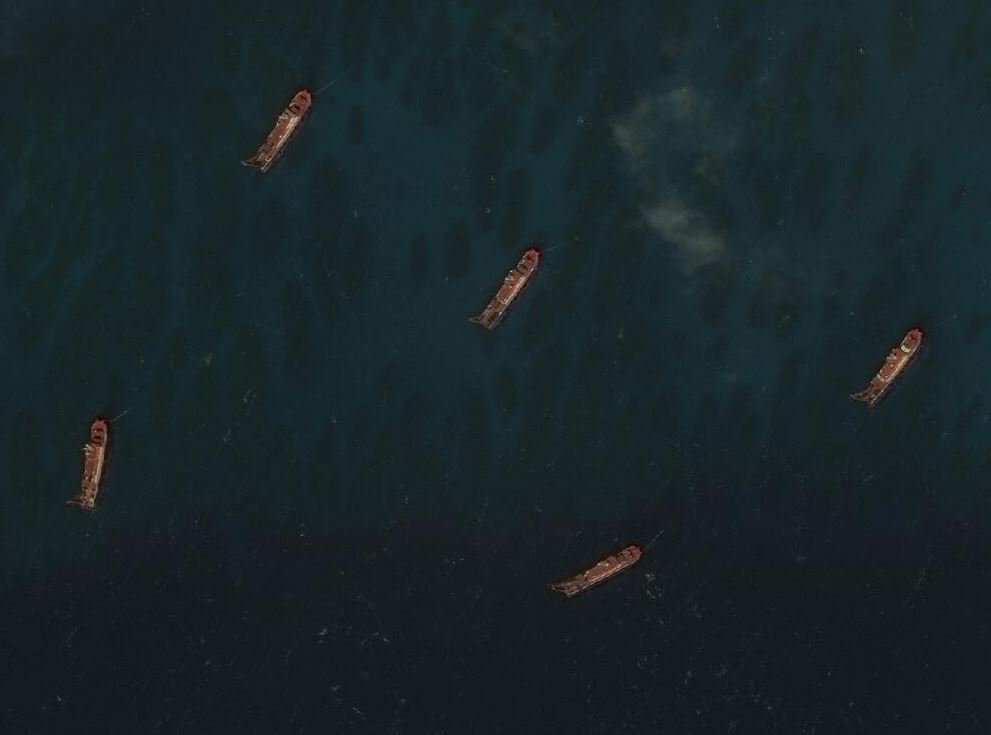
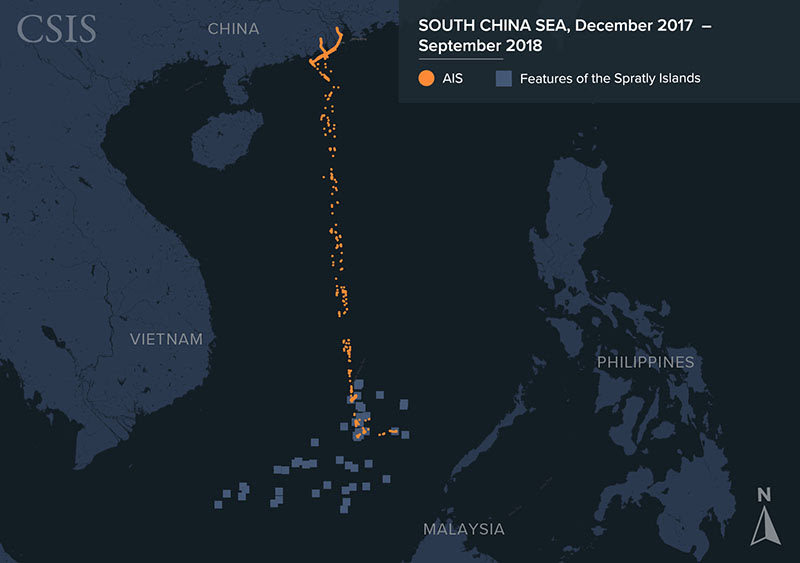
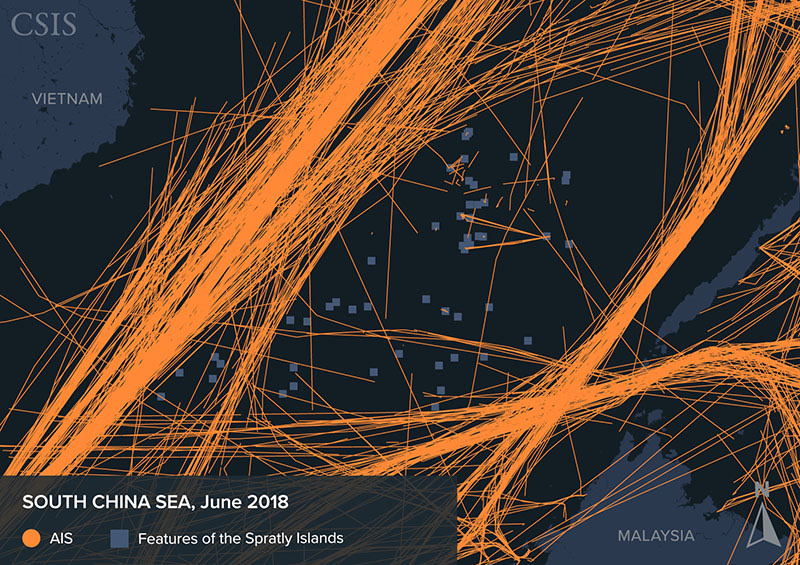
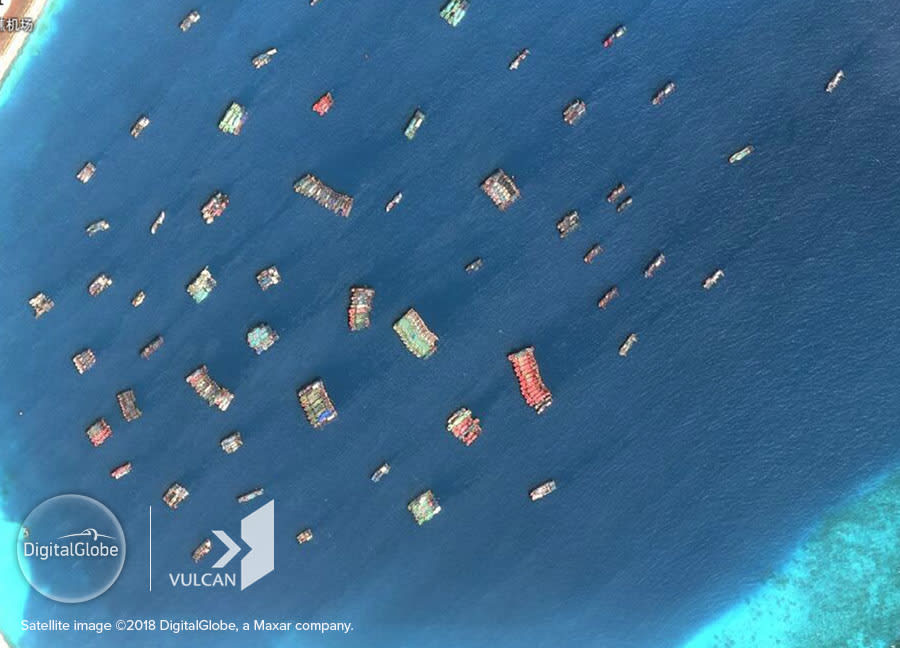
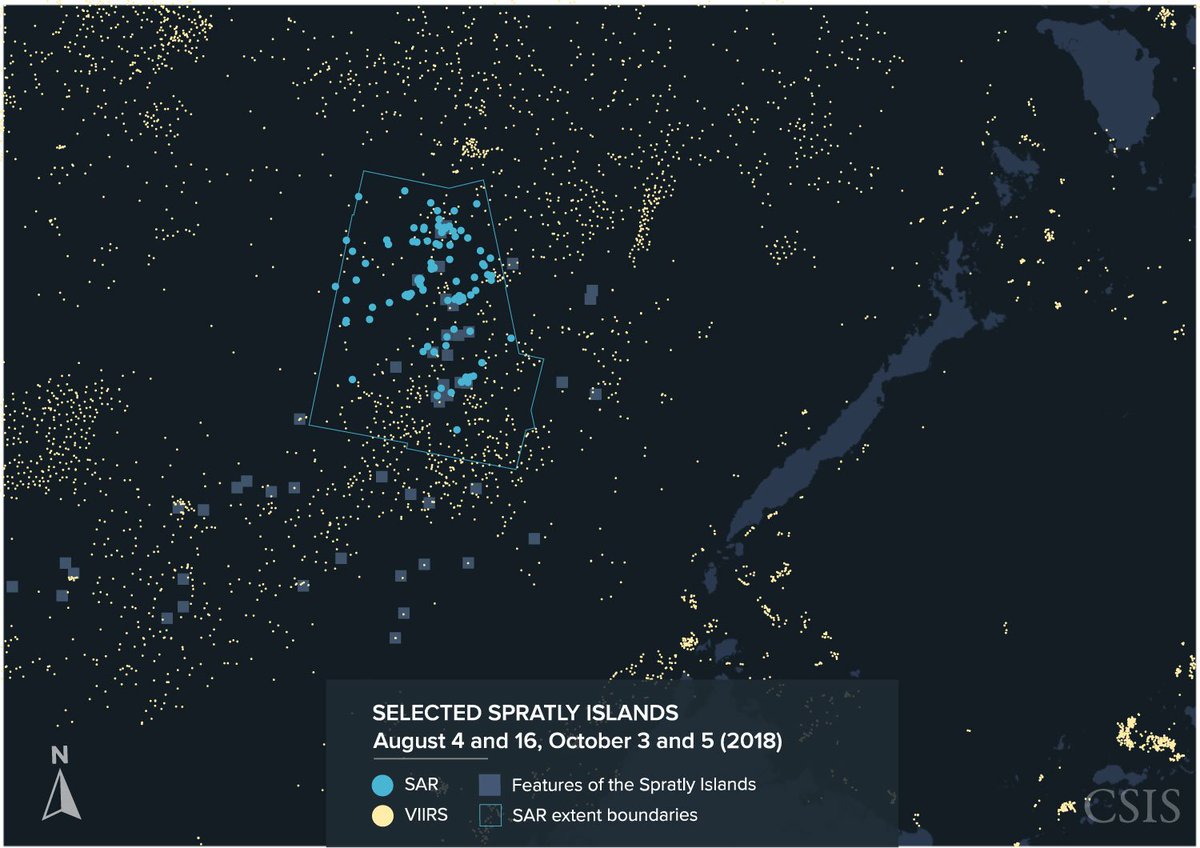
No comments:
Post a Comment